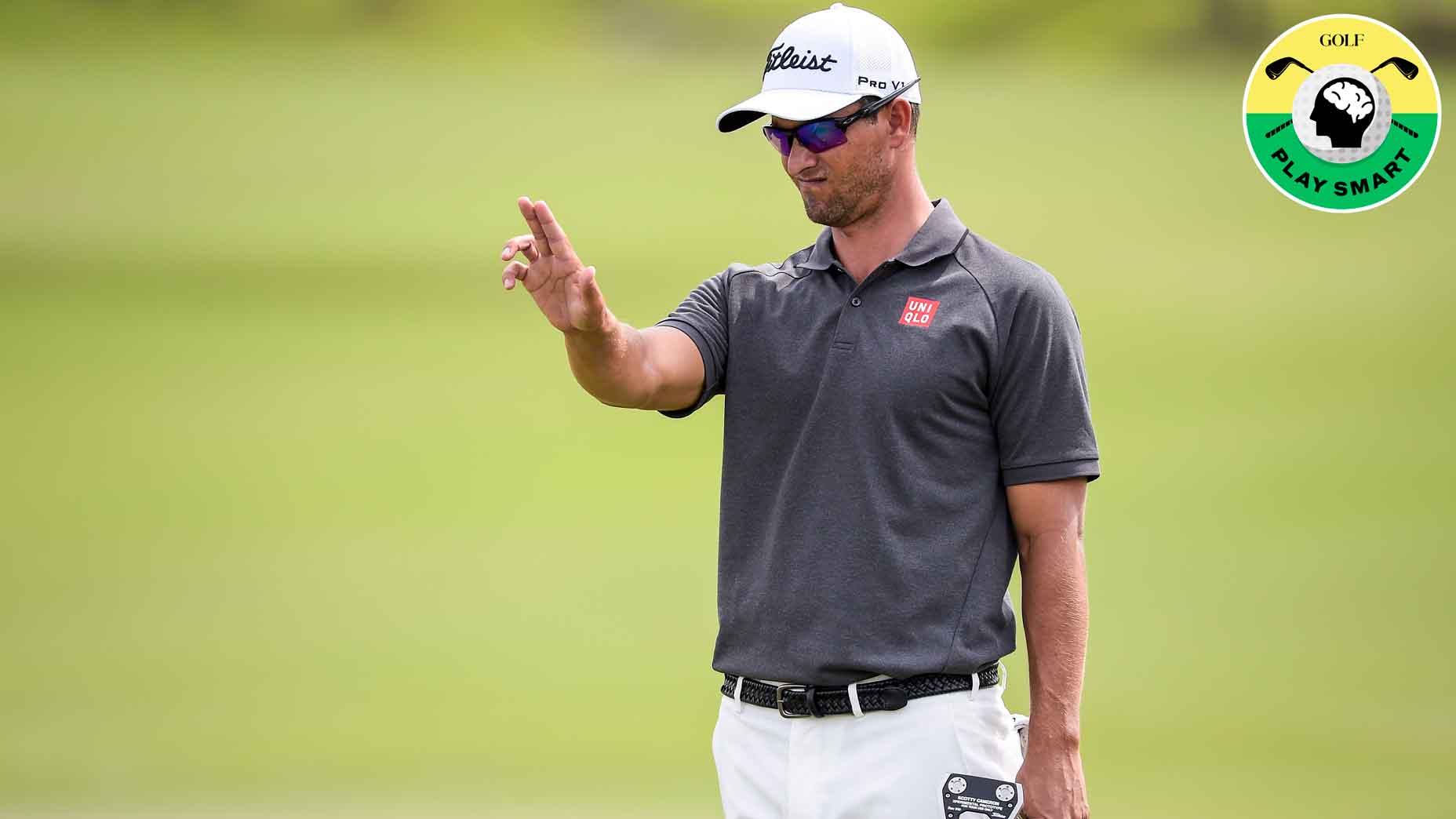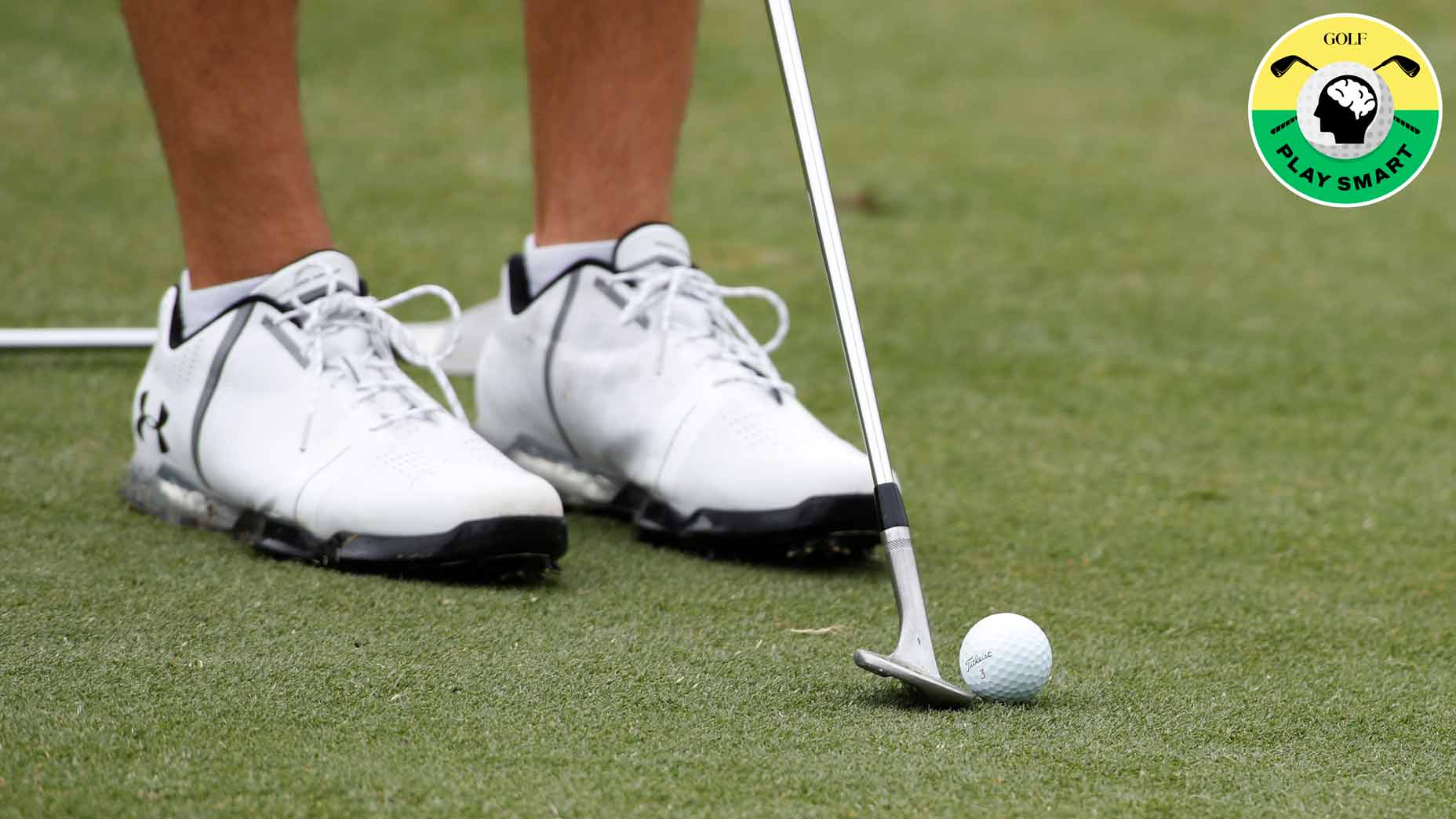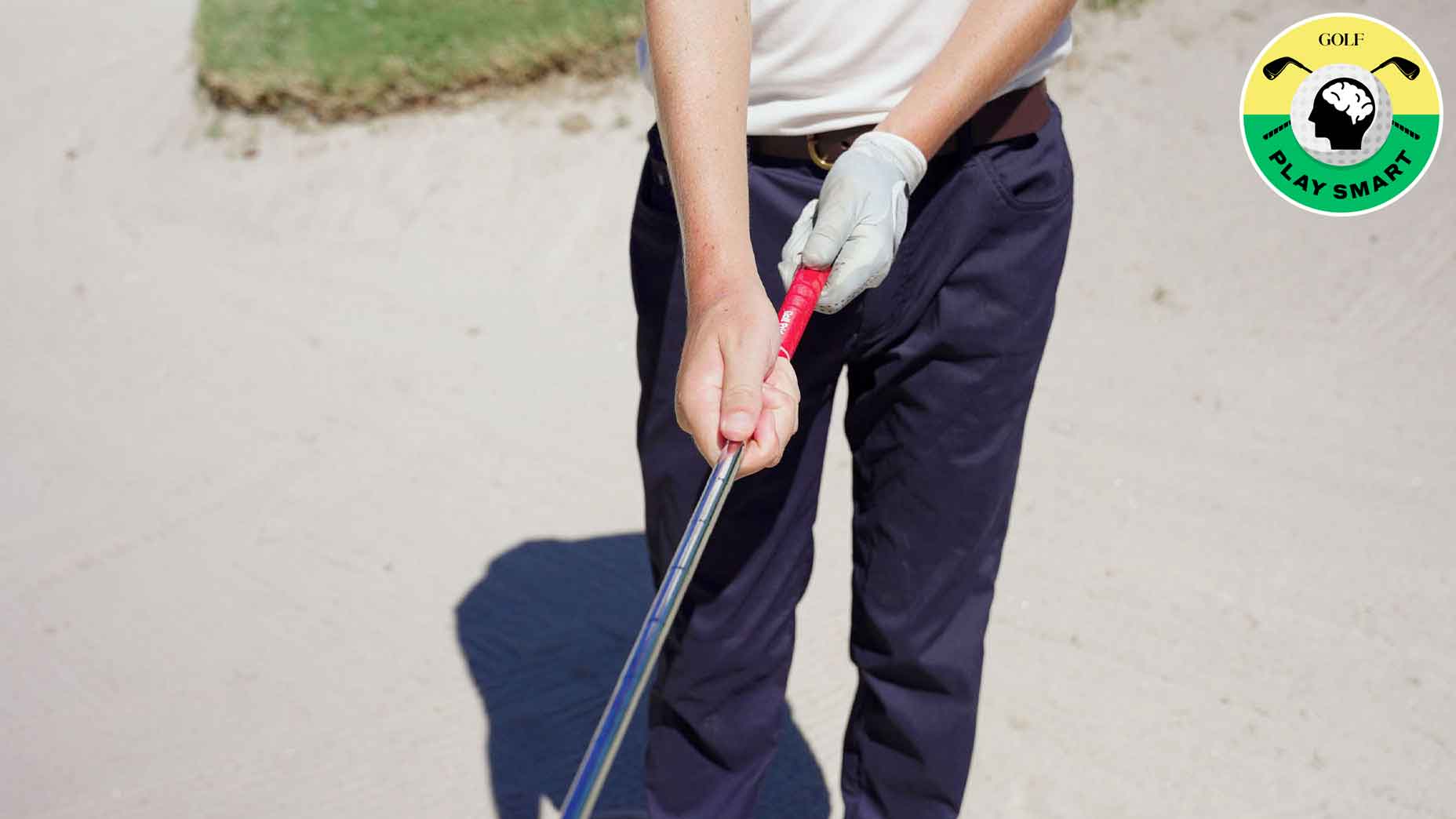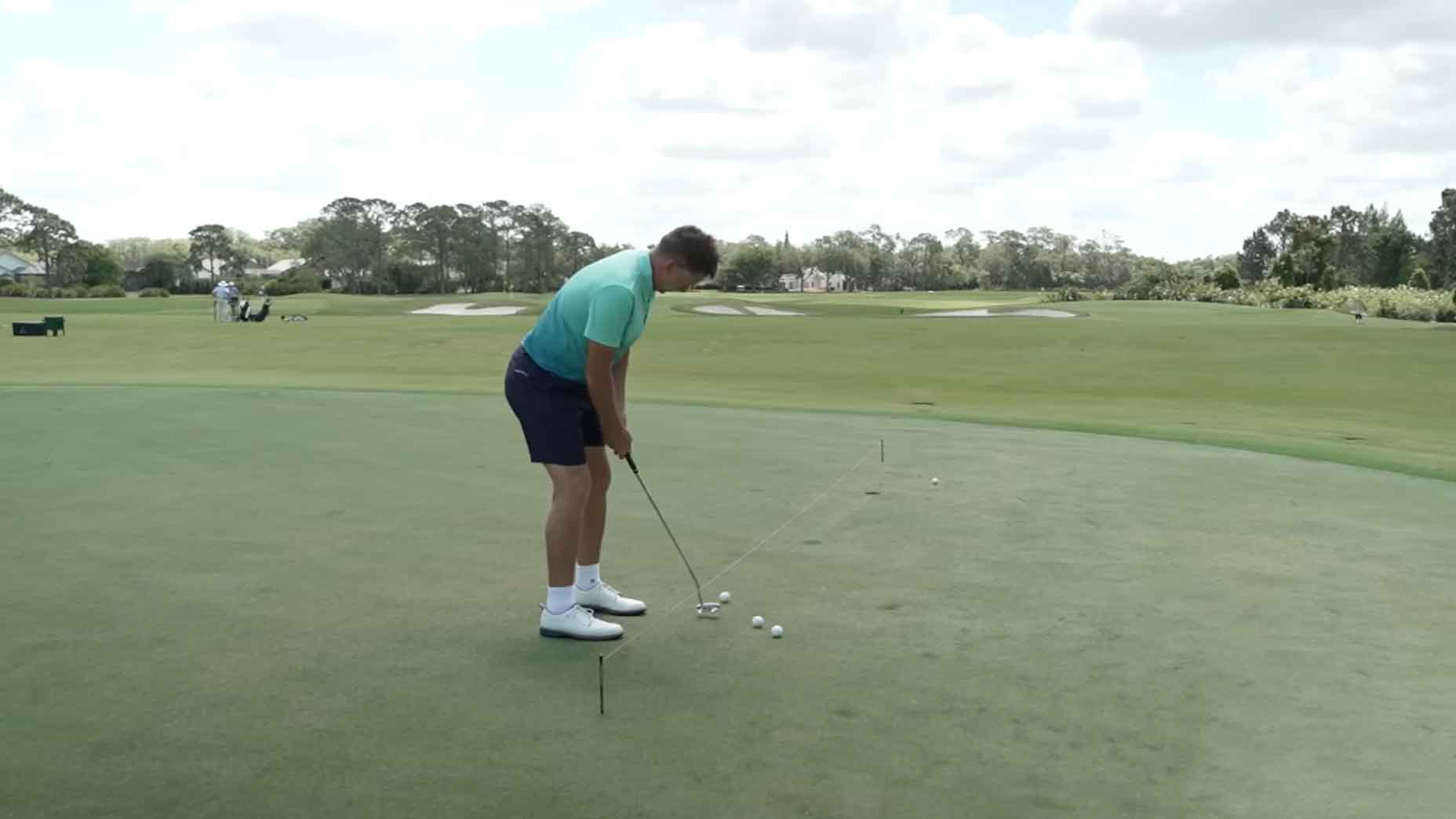Welcome to Play Smart, a regular GOLF.com game-improvement column that will help you become a smarter, better golfer.
It’s impossible to be a great putter if you can’t read greens. In order to know what line to start your ball on, you’ve got to know which way the green breaks.
Everyone has their own method for reading greens, but over the last decade or so, AimPoint green reading has become hugely popular — especially among professionals. The method has been adopted by many of the game’s best players — Collin Morikawa, Viktor Hovland and Justin Rose, to name a few — as it marries physics and feel to help get a sense for the correct read on the greens.
Adam Scott is one such pro who uses AimPoint to read greens, and in a recent Instagram video, he gave a brief explanation of how the method works. Check it out below.
How AimPoint works
The first thing you’ve got to do when reading a green using AimPoint is find a spot between your ball and the hole and straddle that spot with one foot on either side of your line. What you’re doing here is using your feet to feel which direction the slope is moving.
“I feel the weight in my left foot,” Scott says. “So it’s sloping right to left.”
The next step is to determine the severity of this slope, on a scale from one to five, with one being the least severe and five being the highest. Once you’ve determined this number, you can go stand behind your ball.
Next, you need to stand behind the ball and close one eye. Lift your hand so that your pointer finger is just outside the cup. Based on the percent slope you think is affecting your putt, put up that many fingers on your hand (i.e., one finger for one percent, two fingers for two percent, etc.).
For example, if you think there is a two-percent grade slope from right to left, put up two fingers and line up your pointer finger just outside the right side of the cup. Where your second finger is pointed is your aim point.
“I’ve been doing it for nine years, so I feel like I read the greens really well,” Scott says. “So I don’t know what my problem is.”
All that’s left to do is line up your ball and hit it at the aim point. If you’ve judged the slope correctly, the ball should roll right toward the hole.










